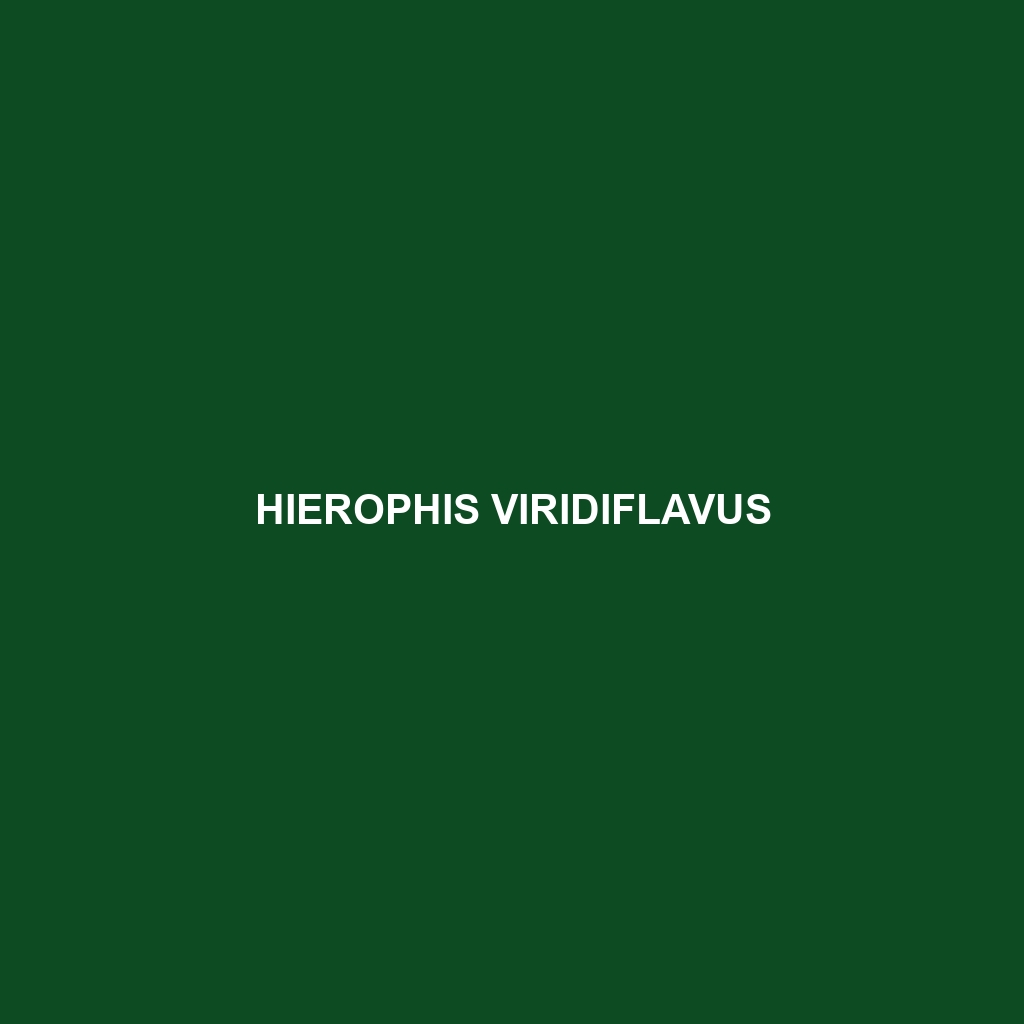Common Name
Hierophis viridiflavus
Scientific Name
Hierophis viridiflavus
Habitat
The Hierophis viridiflavus, commonly known as the Green Whip Snake, primarily inhabits a range of environments across Europe, particularly in the Mediterranean region. These areas feature a combination of temperate forests, rocky hillsides, open grasslands, and shrublands. The species thrives in warm, sunny climates, typically found in regions that experience moderate rainfall and ample sunlight, which are crucial for thermoregulation. They often inhabit dry grasslands and can be seen basking on rocks or trees in the early morning. As an adaptable species, the Green Whip Snake can also be found near agricultural lands or disturbed habitats, showcasing its ability to thrive in diverse environments.
Physical Characteristics
Hierophis viridiflavus displays several striking physical characteristics that set it apart from other snake species. Adults typically reach lengths of 1.2 to 2.4 meters (4 to 8 feet). Their slender bodies are complemented by a long, agile tail that aids in their swiftness. The coloration of the Green Whip Snake is one of its most distinctive features; it presents a vibrant green hue with yellow or whitish underbelly patterns that provide excellent camouflage among the foliage and grass. Female Green Whip Snakes are generally larger than males and may exhibit slightly different coloration, enabling a degree of sexual dimorphism. Unique to this species, they also have a pointed, elongated snout, adding to their aerodynamic shape.
Behavior
The behavior of Hierophis viridiflavus is both captivating and essential for its survival. Primarily diurnal, these snakes are most active during the day, relying on their keen eyesight to hunt for prey. Their agile movement allows them to navigate through their habitats quickly. While they are solitary creatures, they may exhibit social behavior during the mating season. Interestingly, they have a unique defensive behavior; when threatened, they can flatten their bodies and exhibit a rapid, writhing motion to confuse predators. Mating rituals typically occur in the spring, where males engage in courtship displays that involve intertwining and showing off vibrant colors.
Diet
The Hierophis viridiflavus is predominantly carnivorous, favoring a diet that includes small mammals, birds, and a variety of lizards. These snakes are skilled hunters and possess excellent eyesight, allowing them to spot prey from a distance. They also consume a significant quantity of frogs and small rodents, showcasing their adaptability in dietary habits. Their feeding patterns are characterized by ambush tactics, where they rely on stealth and speed to capture prey. During the summer months, their caloric intake increases noticeably due to heightened activity levels in warmer temperatures.
Reproduction
The reproductive cycle of Hierophis viridiflavus is fascinating, predominantly occurring from April to June as temperatures rise. After a series of courtship rituals, females lay eggs, with clutches usually consisting of 5 to 20 eggs, depending on the female’s age and size. The eggs are typically laid in warm, moist environments such as under rocks or in decaying vegetation. After an incubation period of approximately 60 to 70 days, the eggs hatch. Hatchlings are independent and measure around 25 to 30 cm (10 to 12 inches) at birth. Parental care is absent, as the species relies on the natural instincts of the young to survive in their environment.
Conservation Status
The conservation status of Hierophis viridiflavus is currently classified as Least Concern by the International Union for Conservation of Nature (IUCN), indicating that there are no immediate threats to their population numbers. However, habitat loss due to urbanization, agriculture, and climate change poses long-term risks. Conservation efforts are focused on preserving natural habitats and ensuring that ecosystems remain balanced. Local presence in some regions helps monitor populations and implement protective measures when necessary.
Interesting Facts
One intriguing aspect of Hierophis viridiflavus is its remarkable speed; it is one of the fastest snakes in Europe, capable of moving swiftly to avoid predators and catch prey. Additionally, these snakes are known for their incredible climbing ability, often seen in trees or bushes. Another unique adaptation is their ability to produce a hissing sound when threatened, which can deter potential threats. Their long, slender form allows them to navigate tight spaces effortlessly, making them exceptional hunters.
Role in Ecosystem
Hierophis viridiflavus plays a vital ecological role as both predator and prey within its ecosystem. As a predator, it helps control populations of small mammals and reptiles, contributing to the balance of local biodiversity. Its presence in various habitats indicates a healthy ecosystem, as they are sensitive to environmental changes. Furthermore, they serve as prey for larger birds of prey and mammals, thereby supporting the dietary needs of other species within the food web. This makes them an integral part of their habitat, highlighting their status as a key species in maintaining ecological equilibrium.
